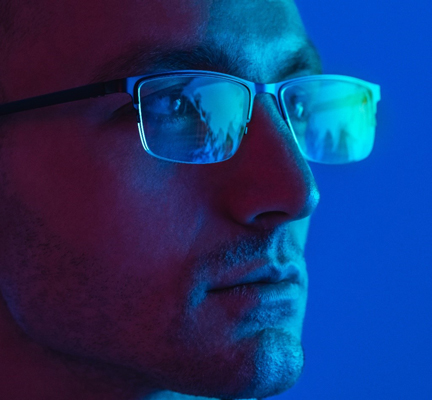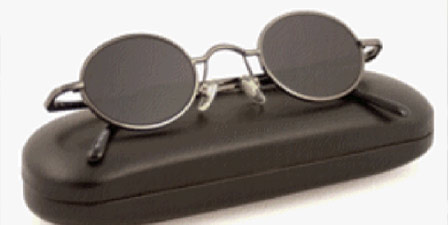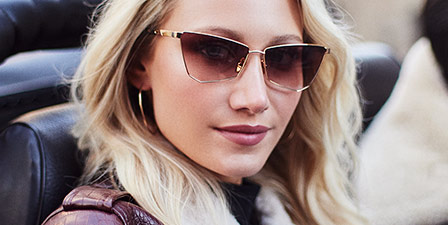
By Preston Fassel
Feeling blue? There’s a chance that you and a lot of other folks will be in 2020, and for once, that’s a good thing.
Pantone recently announced the color of the year for 2020—and while in years past, their selections have been on the wilder parts of the color wheel, this time it’s something a little more broadly accessible: Classic blue. While it may seem, at first glance, that this is either one of those bizarre, random declarations that only affects the extremely fashion or trend conscious, the truth goes a little bit deeper. In years past, eyewear designers have taken cues from Pantone in coming up with chic frames that both utilize the color of the year and represent some of the most popular contemporary frame designs. I’ll never forget how after Pantone declared emerald the color of 2013, our dispensary was suddenly home to a variety of translucent green cateyes from several manufacturers, representing both the trend of 60s-influenced frames and the color of the year.
So, what does it mean for opticians? For 2020, it’s a unique opportunity. As I said before, Pantone has often been guilty of choosing slightly more outlandish colors that don’t necessarily flatter every individual when it comes to fashion, and especially when it comes to eyewear. While individuals living in fashion and trend centers such as New York, LA, Austin, Portland and everywhere else hipsters are found, may be receptive to getting experimental with their glasses, most folks tend to want to stick to the classics—black, tortoise, gold, silver, etc. Broadly speaking, many women may be more receptive to unconventional frame colors, as women’s accessories tend to come in a wider variety of colors, but even then, they may also be reticent to get too wild, especially if they’re coordination conscious. There are some colors that plainly do not work as eyewear. I may own a number of shirts in “living coral,” the 2019 color of the year, but I saw very few frames offered in the shade, and for good reason- it doesn’t flatter anyone in eyewear.
Which brings us back to classic blue.
The “classic” in the name says quite a bit. It’s not shocking blue or royal blue, not so-dark-it-might-as-well-be-black navy blue or burn-your-eyes-out-blue; it’s… well, blue. And who doesn’t look good in blue? It’s a soothing shade that goes well with darker or light skin, flatters complexions with pink or yellow undertones, and is accessible to both male and female patients. Men may balk at fuscia frames, but if you’re trying to get a patient to step outside the box a little, blue is hardly a radical fashion choice. Women, meanwhile, will be able to take comfort in the fact that they can be a little more playful with their frames but not have to worry about their eyewear clashing with other accessories—blue, after all, does go with everything.
So I for one welcome our blue 2020. Blue frames, I predict, will be an excellent way to encourage patients to broaden their optical horizons and experiment with new looks—meaning new frame sales for you. And, it can be used to open up a dialogue about blue fashion tints, or even blue photochromics, as the color is now offered by a variety of lens manufacturers including Transitions and ZEISS.
For once, in 2020, being blue can be one of the best things to happen to your practice.
You can learn how to treat new eyewear purchases as a facial makeover and the importance of demonstrating an understanding of skin tone and facial contour with our CE, The Journey from Expert Technician to Creative Artisan, at 2020mag.com/ce.













